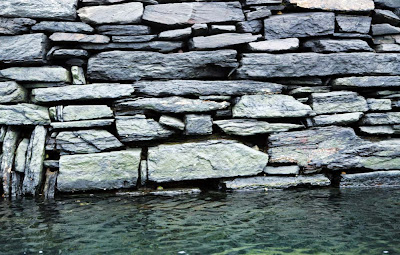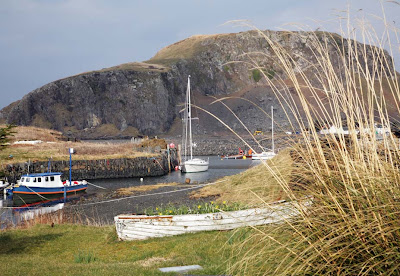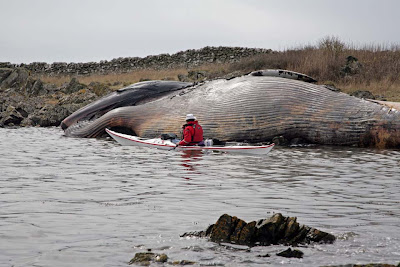
The little island of Easdale (which I recently described ) has been cut off from its larger neighbour, the island of Seil for nearly a week. Winter storms have shifted the slate spoil at the mouth of its sheltered harbour. The open passenger ferry boat has been unable to access its jetty and islanders have been stranded on the mainland and schoolchildren have been unable to get to school. The local council were not making very fast progress to dredge the harbour but The Herald reports a story of great island initiative. Islander Mike Mackenzie bought a 12 ton JCB excavator on the mainland and had it shipped to Easdale on a landing craft. He then spent 36 hours excavating the harbour mouth himself and restored the islanders' ferry link. Wonderful!

Easdale has 60 permanent residents and 13 of these are children of school age or younger. The island is car free and the passenger ferry takes just 5 minutes to cross to Seil.

The harbour was built in the 18th century and its beautifully constructed walls are now protected by an architectural "B" listing. There is a great deal of interesting industrial architecture and heritage on Seil as it was once a centre for slate mining.

It is easy to kayak through the narrow harbour mouth and explore the sheltered jetties and inlets within.

The little harbour is dominated by the bulk of Dun Mor on Seil and by the initiative of the islanders.









